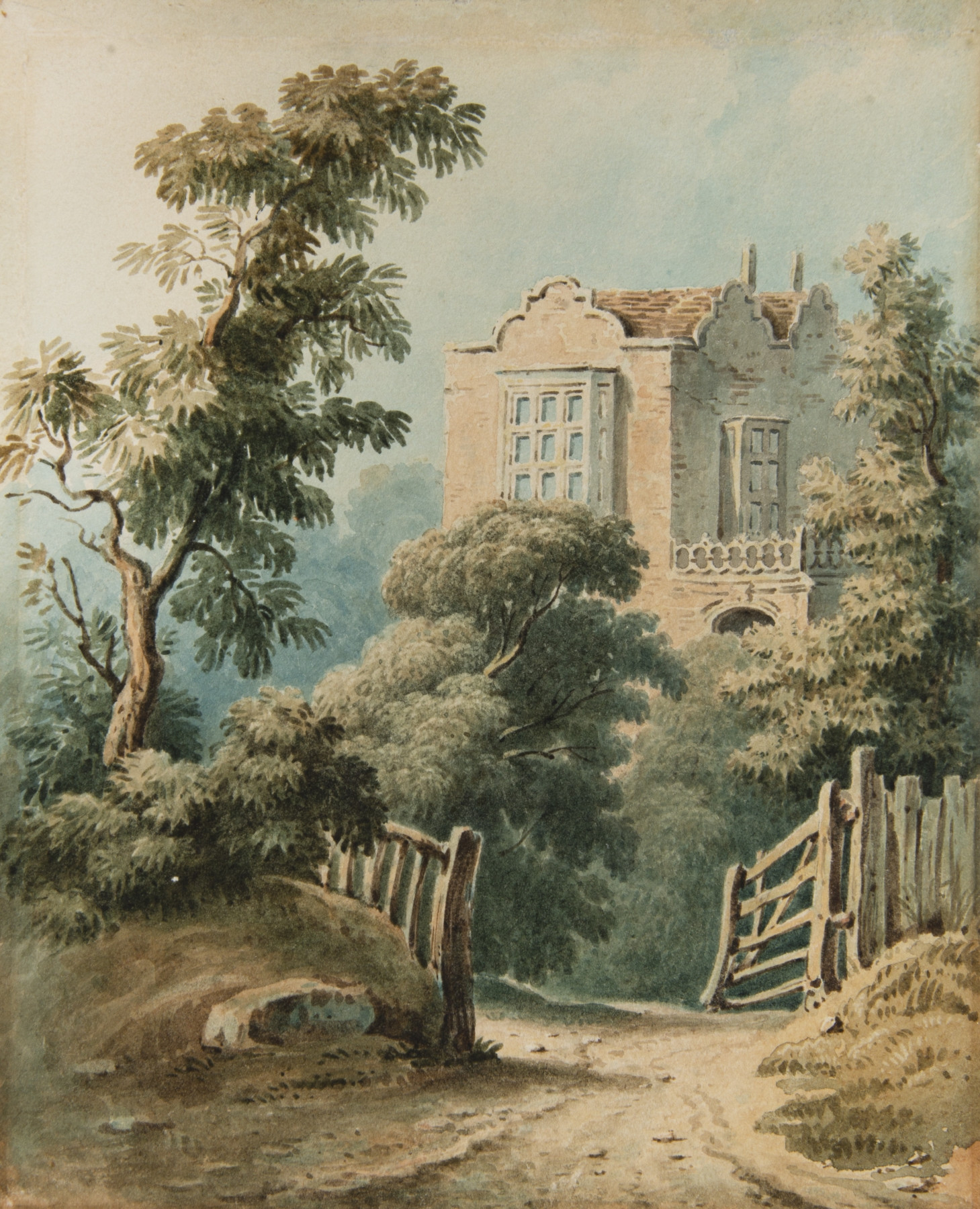
(click image to enlarge)
Holland House was a Jacobean mansion designed in 1605 by John Thorpe for the diplomat, Sir Walter Cope, and originally known as Cope Castle. It was built two miles to the west London, within a 500 acre country estate, the remains of which form the present Holland Park in Kensington. On Cope’s death in 1614, the estate passed to his son-in-law, Henry Rich, who, a decade later, became 1st Earl of Holland, and set about extending the house and reshaping its gardens. From the Restoration to the Georgian period, it was mostly let on short leases to a variety of inhabitants, and was also the home of Joseph Addison (who married the widow of Edward Rich, and died in the house in 1719). In 1768, it was purchased by Henry Fox, and thus became the headquarters of the Whig party. The house remained a centre for literary, political and social life well into the nineteenth century, though much of the estate was turned over to residential development.
John Varley produced the present watercolour of the west corner of the south front of the house in the early nineteenth century. It focuses on the windows of the principal library, which ran the full length of the first floor of the west wing, and was famed for its decoration, its contents and its literary associations. Taking its cue from the antiquity of the architecture, the composition comprises a Picturesque vignette, with the fencing and foliage framing the building. Other views of the south front made at the time, such as those by John Buckler (in the British Museum and elsewhere), suggest that Varley has taken artistic licence, and that the grounds were well maintained.
Holland House remained relatively unchanged until the Blitz. On 27 September 1940, a German bombing raid destroyed almost all but the east wing and the ground floor surrounding the terrace. However, most of the contents of the library were undamaged. Given Grade I listed status in 1949, the remains of the building, with the 52 acres still surrounding it, was sold to London County Council, an eventually passed to the Royal Borough of Kensington and Chelsea. For some decades, the East Wing housed a youth hostel. The remains of the house now form the back drop to the open air Opera Holland Park, while the Orangery and Ice House provide spaces for exhibitions and the Ballroom contains a restaurant.